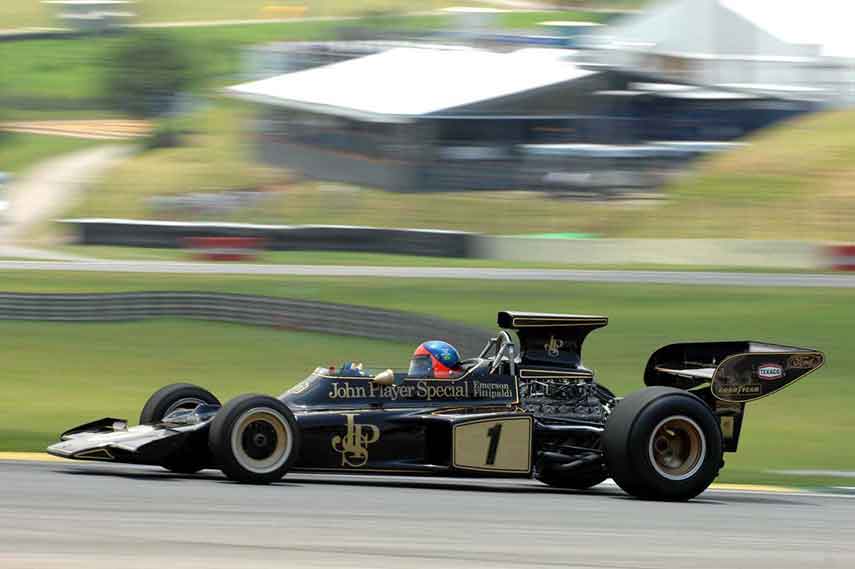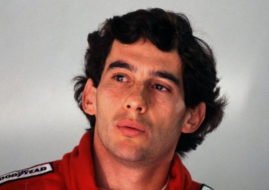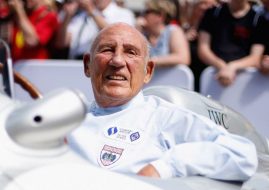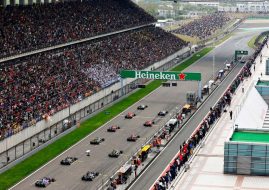When Lotus 72 Ruled the Tracks
Throughout its history, Lotus has had some iconic cars in Formula 1 and Lotus 72 surely was one of them. In the six seasons in which it was used, this car became one of the most successful cars in the history of Formula 1, with 20 Grand Prix victories, two Drivers Championship titles, and three titles in Constructors championship.
Lotus needed a proper successor of type 49
Lotus 49 needed a proper successor, as the types 56B and 63 failed to gain enough glory, and this is when the Lotus 72 stepped in. Colin Chapman and Maurice Phillippe had a lot of work to do to prepare a model which will rule the tracks across the world and indeed, they did an excellent job, implementing many innovative things in design and technical solutions. For example, aerodynamics was improved with a theretofore biggest rear wing with three separate pieces.

Lotus 72 cutaway
Lotus 72 was a two-wheel-drive car powered by Ford-Cosworth V8 naturally aspirated engine which was well ahead of its rivals. The only problem with the Type 72 was the handling of the car caused by a new concept in suspension geometry. Later, the problem with suspension was resolved and the car was ready to fascinate not just the fans all over the world but also the other teams and drivers.
Poor start, yet an excellent finish of 1970
The start of the career for Lotus 72 wasn’t brilliant. The vehicle had its debut at the 1970 Spanish GP but failed to finish the race. After another disappointing outing at Silverstone, the car was temporarily withdrawn for further developing and reworking on chassis. After that, Jochen Rindt did a perfect job, scoring four wins in-a-row which was enough to clinch the World championship titlesadly, the Austrian won it posthumously as he was killed in a crash at Monza. Later in 1970, Emerson Fittipaldi scored another victory and secured Manufacturers title for Lotus.

Jochen Rindt gave the famous Lotus 72 its race debut at Jarama circuit, 1970
A step backwards in 1971
The following year for Lotus was not as good as the previous one. The D specification chassis was introduced and some other modifications were made, including a new one-piece rear wing, but the results were still relatively poor. Lotus failed to become the winner of a single race in 1971, while Fittipaldi had three podium finishes from nine starts.
Lotus takes new colours for a new success in Formula 1
For the season of 1972, Lotus repainted their cars in recognizable colours: from red to black with gold stripes, the mix later became one of the most famous liveries in the history of Formula 1. With a new look, all the cars entered the season with a D specification chassis and the team led by Emerson Fittipaldi did an excellent job. Lotus won the Constructors championship by 10 points while the Brazilian won the Drivers championship after scoring five wins and three podium finishes.

Emerson Fittipaldi on the way to becoming the youngest world champion driving a Lotus 72 with a famous John Player Special livery
Lotus kept the D specification chassis but also introduced the E specification for 1973. The team had a proper rival in Tyrrell, so Lotus decided to pair Fittipaldi with somebody who was able to fight for the top of the standings. The choice was the Swedish hot prospect, Ronnie Peterson. Paired with the reigning champion, he did a brilliant job and Lotus defended its Constructors title. Fittipaldi failed in his attempt to win the second consecutive title and finished as a runner-up while Peterson was third at the end of the season. Reliability was a huge problem for Lotus that year. Fittipaldi started well, but later suffered a lot and left Lotus at the end of the year, while Peterson struggled in the first half and later scored four wins, just as his teammate.
The fundamental problem of the chassis
Relying on E model of chassis in 1974, Lotus 72’s glory slowly started to fade. Lotus had a plan to race with the new 76 model, but this type soon proved to be a failure and the old 72 was reverted to the track. Peterson was paired with Jacky Ickx, and the Swede clinched three wins even though he was still unable to parry to other title contenders. In Constructors championship, Lotus finished fourth what wasn’t so bad considering all the circumstances.

Jacky Ickx and Ronnie Peterson ready for racing in the Lotus 72
1975 was the last year for Lotus 72 in Formula 1 and it was a complete disaster. Lotus tried to improve things with an F specification chassis but nothing could help the car which was outdated in comparison to the other cars on the grid. Jacky Ickx left the team in mid-season while Peterson fought until the end with a faint result: a total score of only five points, two of them in the last race of the year, the US Grand Prix.
Video – Lotus 72
That was the end of the Lotus 72 era. At the same time, it was the start of the Lotus’ downfall in Formula 1. The 72 model has earned a legendary status throughout the years among the fans with a good reason, and some models of this wonderful and successful car can still be seen at certain historic events.
Lotus 72 technical specifications
| Chassis | aluminium monocoque with fully stressed engine |
| Length | 4.191 mm |
| Width | 1.880 mm |
| Height | 1.168 mm |
| Weight | 540 kg |
| Suspension (front & rear) | double wishbones, torsion bar springs, dampers |
| Wheelbase | 2.540 mm |
| Track (front & rear) | 1.524 mm / 1.626 mm |
| Engine | tFord-Cosworth DFV, 2993cc V8, naturally aspirated, mid-engine, longitudinally mounted |
| Power | 440 bhp / 328 KW at 10,000 rpm |
| Gearbox | Hewland DG 300 5 speed Manual |
| Brakes | ventilated discs, in-board |
| Tires | Firestone and Goodyear |
Photo: deviantart.com smcars.net formula1.com motorsportfansblog.blogspot.com pinterest.com






